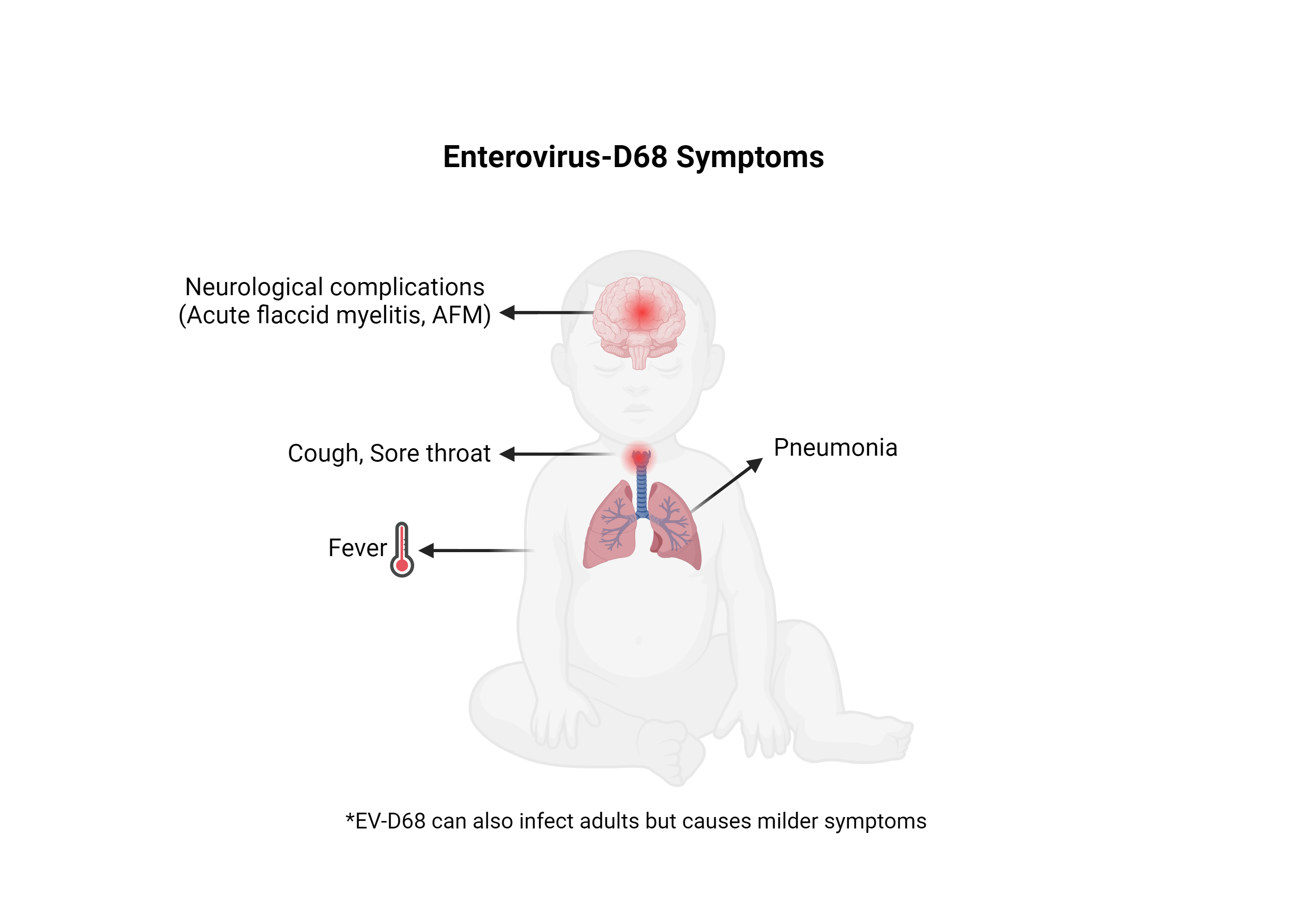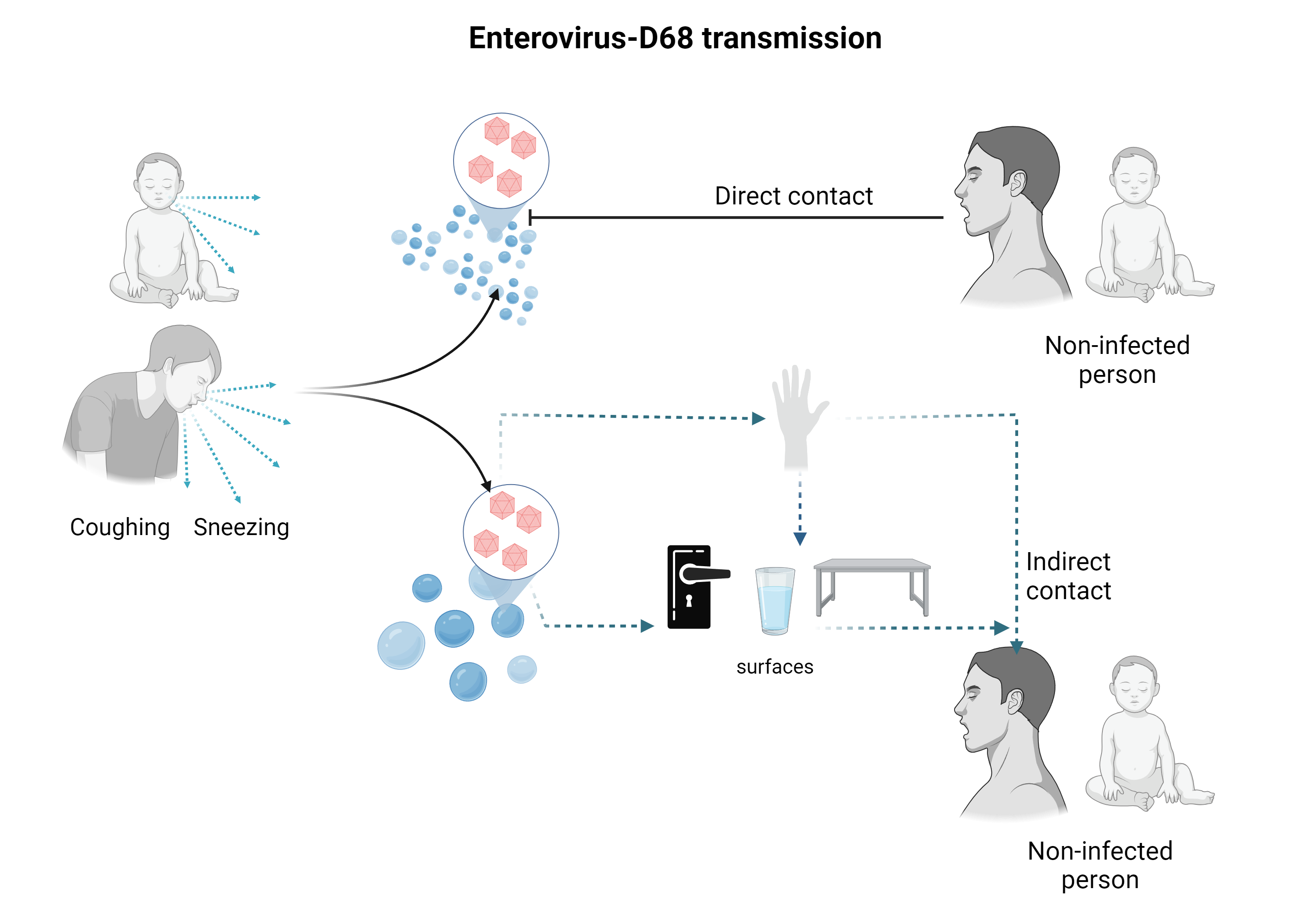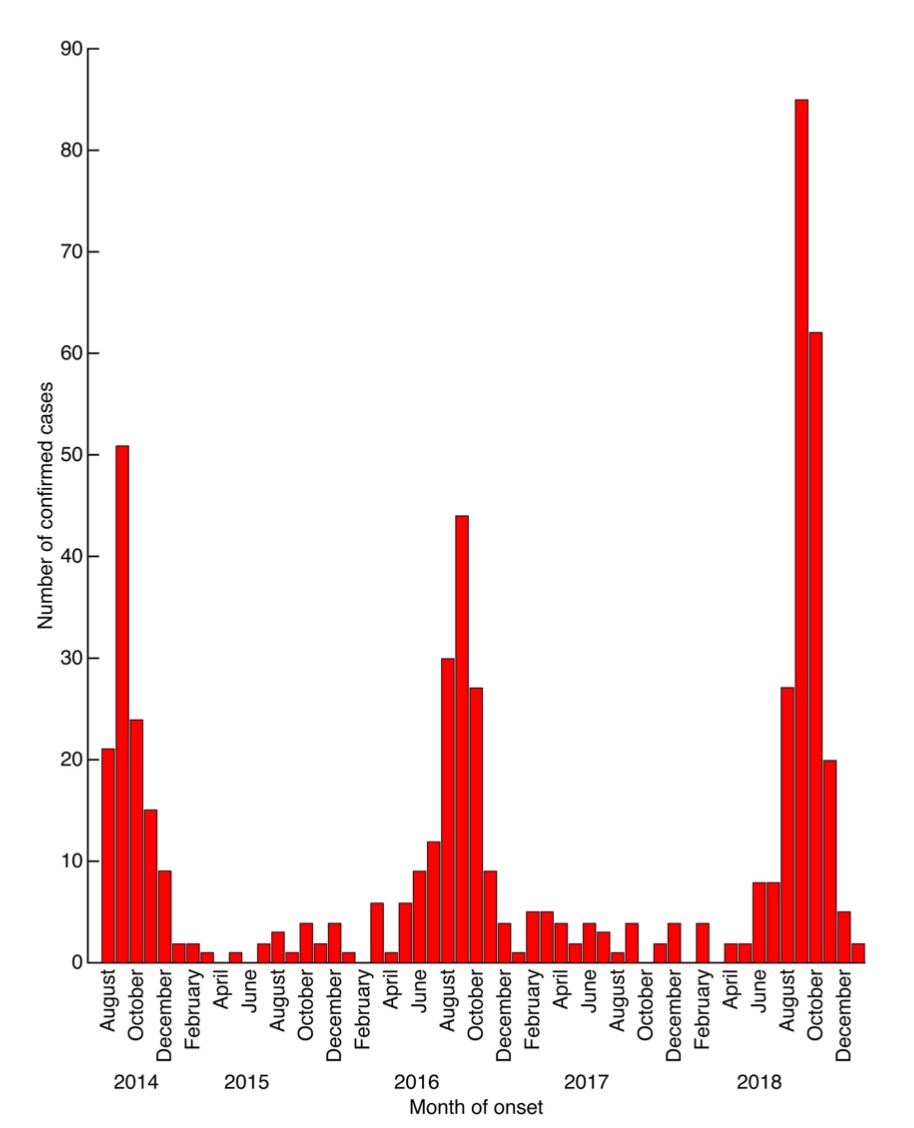Enterovirus-D68 (EV-D68)



First described in 1962 in children hospitalized for pneumonia and bronchiolitis.
Since its discovery, during the long period of surveillance up to 2005, EV-D68 was reported only as a cause of sporadic outbreaks.
In August 2014, the United States and Canada experienced the first few cases of what resulted in the largest known EV-D68 outbreak in history. Unexpectedly, this outbreak of severe respiratory infections coincided with an upsurge in acute flaccid paralysis and cranial nerve dysfunction in children, which has caused concerns in the global community. Similar outbreaks were also seen in different European countries and Asian countries like Japan.
Subsequent EV-D68 epidemics were also seen in 2016 and 2018.